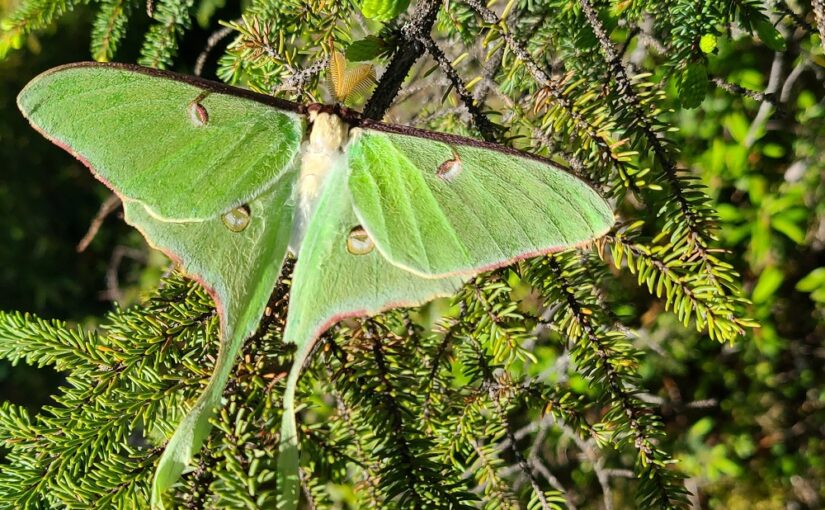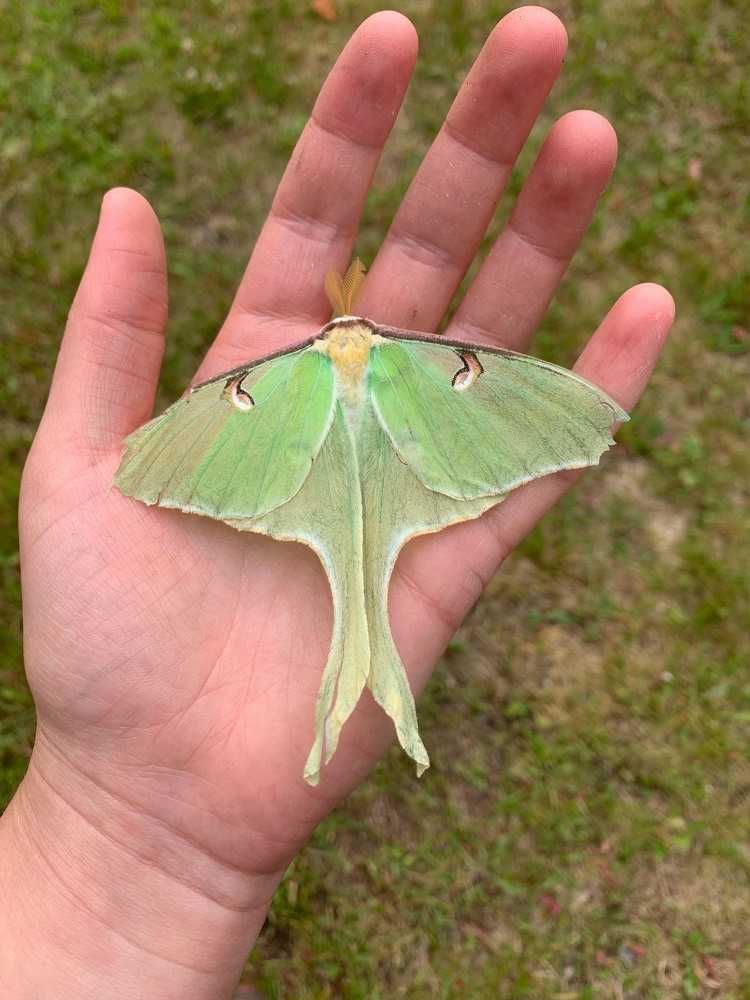Today’s post comes from Senior Park Naturalist Kelsey Fenwick from Blue Lake Provincial Park.
For many, the Luna Moth’s beautiful appearance is a special sight that elicits a sense of curiosity and wonder. For the Luna Moth, its appearance is a clever trick to avoid becoming a bat’s snack!
The first time I spotted a Luna Moth as a child, I was fascinated. I wondered if I had discovered some kind of fairy or other magical creature!
It was the first time an insect had ever caught my attention and curiosity.
Beauty to behold
The appearance of a Luna Moth is not something easily forgotten.
Their size helps them stand out. With a wingspan that can reach over 10 cm wide, they’re one of the largest moth species in North America.
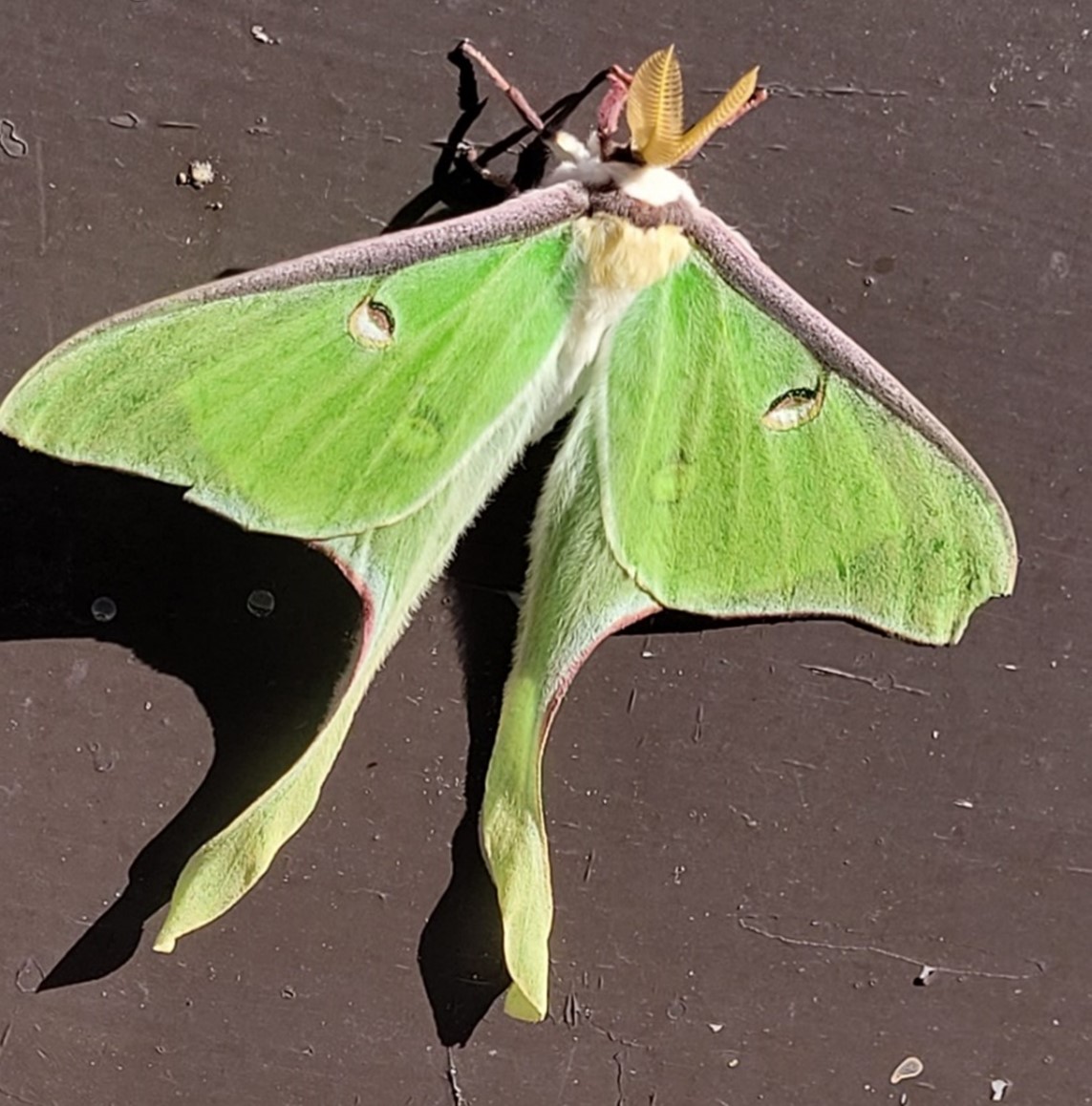
Their pale green wings are outlined in deep purple, with striking eye spots reminiscent of the moon (hence the name “Luna”) and a set of elegant plumes trailing down from their bottom wings.
These are all features that catch the eye and evoke a sense of wonder, whether we’re familiar with their beauty already or not.
While these features are inherently beautiful, they also serve an important purpose for the Luna Moth’s survival.
In the case of Luna Moths and bats, the relationship between predator and prey has resulted in both species adapting to each other’s tricks.
But before we dig deeper into the relationship between these acoustic adversaries, let’s take a look a closer look at moths.
Seeing the big picture
Moths (and butterflies, their close relative) are part of the insect family called Lepidoptera. Their name translates to “scale-wing” because the wings are made of thousands of tiny, overlapping scales that produce colour individually like pixels in a photograph.

These scales can take on a huge variety of colours and shapes to create the interesting patterns and shapes we see on moth wings.
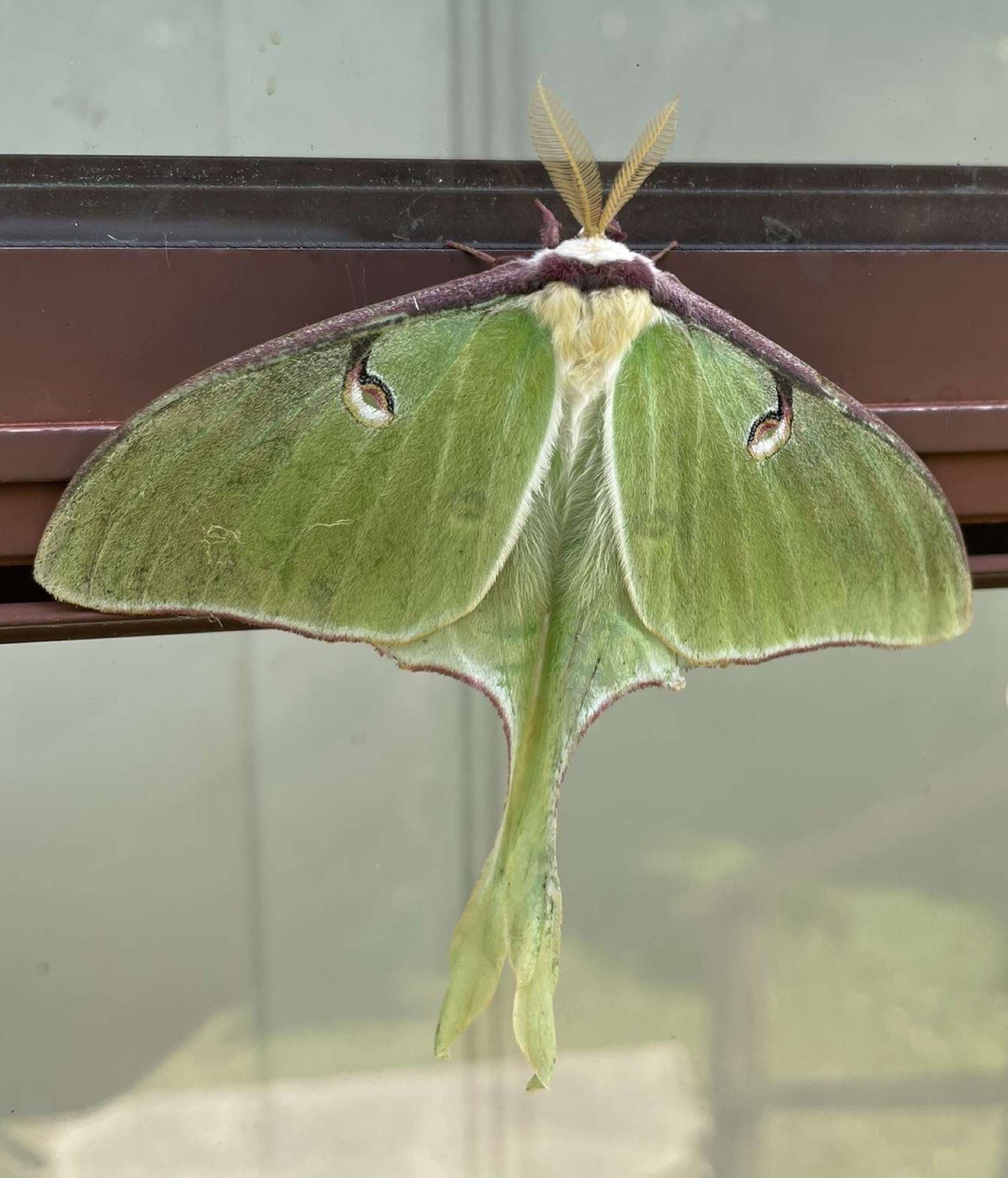
In the case of Luna Moths, they sport two helpful adaptations.
The Luna Moth’s eye spots are designed to mimic the eyes of a larger animal in order to scare away a potential predator.
Their bottom set of wings are elongated into plumes, almost like the Luna Moth has a set of tails. Interestingly, these have nothing to do with flight and serve an alternative purpose.
To explore that purpose, let’s turn our attention to the other piece of the puzzle…
Bats!
Bats are a fascinating species, famously associated with scary things like Halloween or vampires. While bats may be perceived as scary to some, the world without bats is indeed something to be feared.
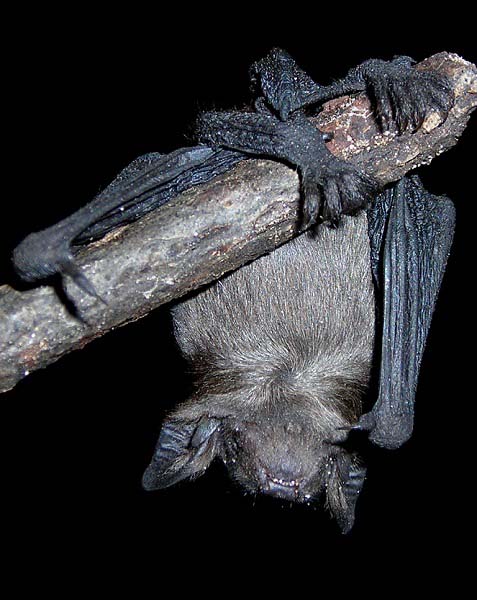
They have an important role of helping to manage the population of insects — especially in places like wetlands — eating mayflies, mosquitos, moths, and other insects which — if left to proliferate — may cause damage to plant communities.
Bats help prevent those species from becoming overpopulated, protecting ecosystem health as a whole.
Bats have an interesting technique for hunting their prey. They hunt at night when there isn’t much light to help them see…
Instead, they use sound!
Bats use echolocation, producing sound waves above a frequency that humans can hear, called ultrasound. The sound waves bounce off objects in the bat’s environment then return to the bat’s ears to tell the bat where something is located.
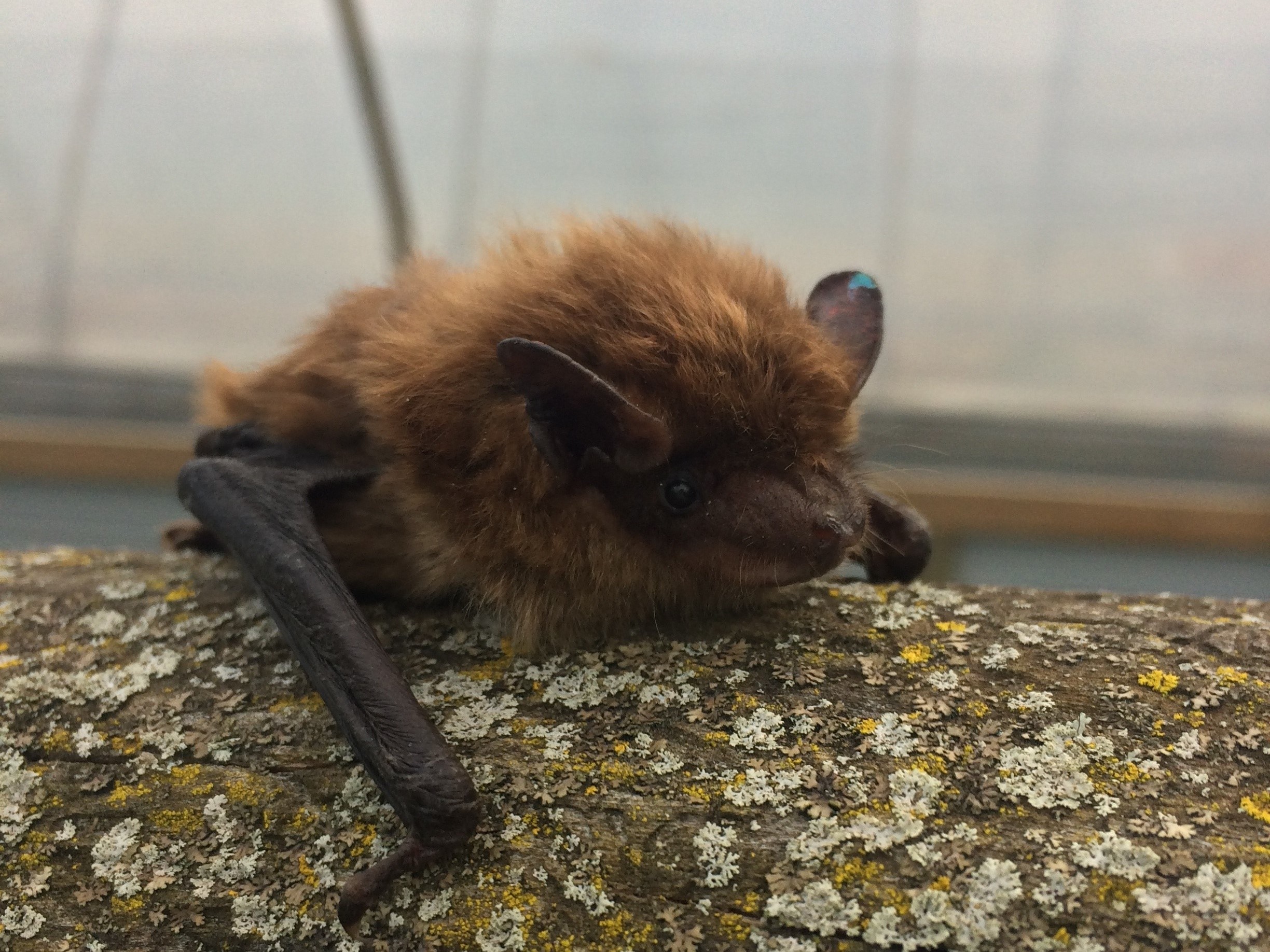
This gives them an advantage in the dark and makes them very successful night-time predators.
Depending on a bat’s size they can eat between 1,000 and 4,000 insects in a single night, including moths!
You must be wondering what this has to do with the Luna Moth…
To avoid being bat’s next meal, they’ve developed an interesting way to evade the bats’ echolocation.
When a Luna Moth flies, those beautiful tail plumes flutter and spin.
The fluttering shifts the location of a bat’s echoes, and the spinning scatters the sound in different directions.
The bat is attracted to the tail and attacks the wrong spot, allowing the Luna Moth (minus some of their tail plumes) to fly away and have a second chance at life.
This complex relationship has resulted in bats and Luna Moths adapting to outsmart each other’s tricks of sound.
It’s a reminder that while nature can be beautiful and fascinating, it is also complicated and ultimately a race for survival.
The next time you marvel at a Luna Moth, remember that its beauty is more than just at treat to our eyes – the shape of the tail plumes and the sound they create helps the Luna Moth survive and continue the circle of life!
